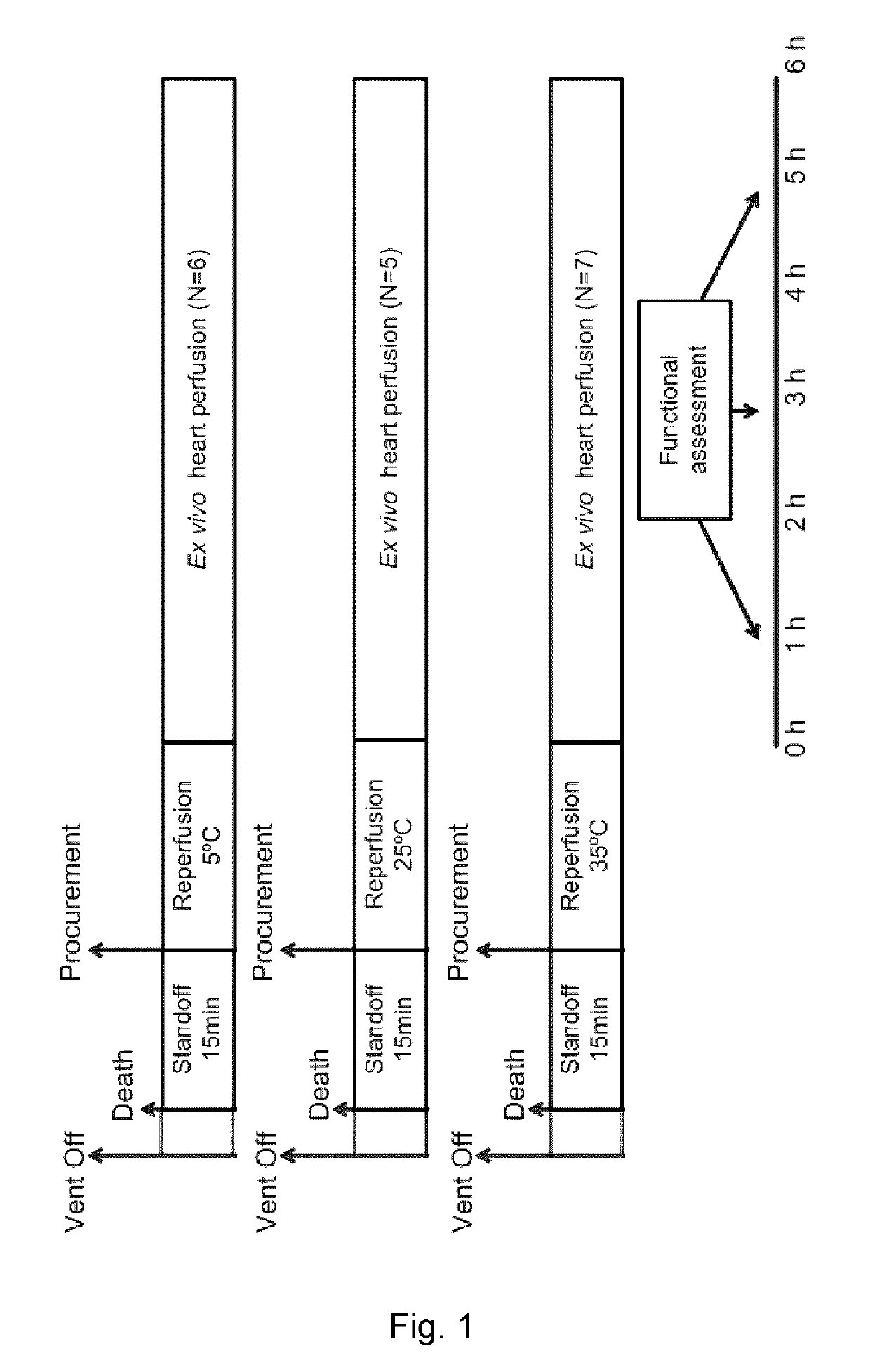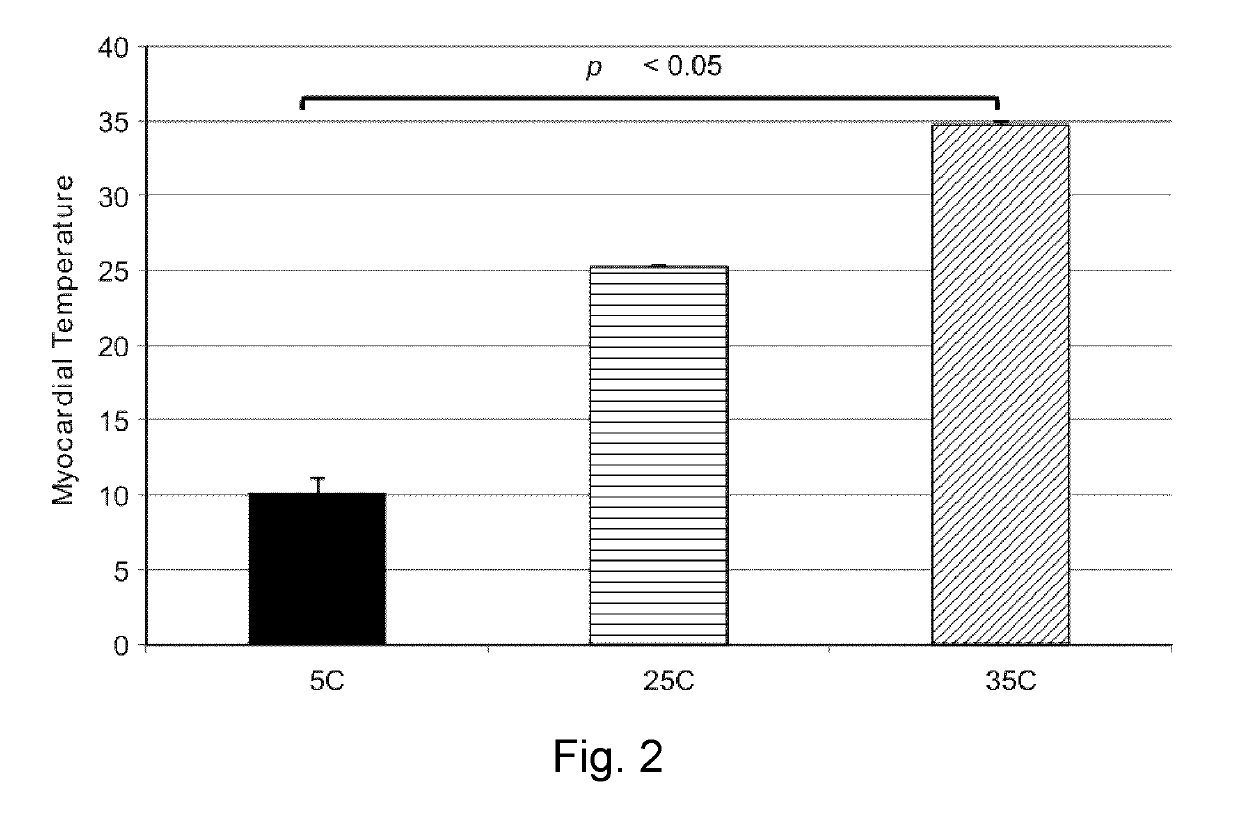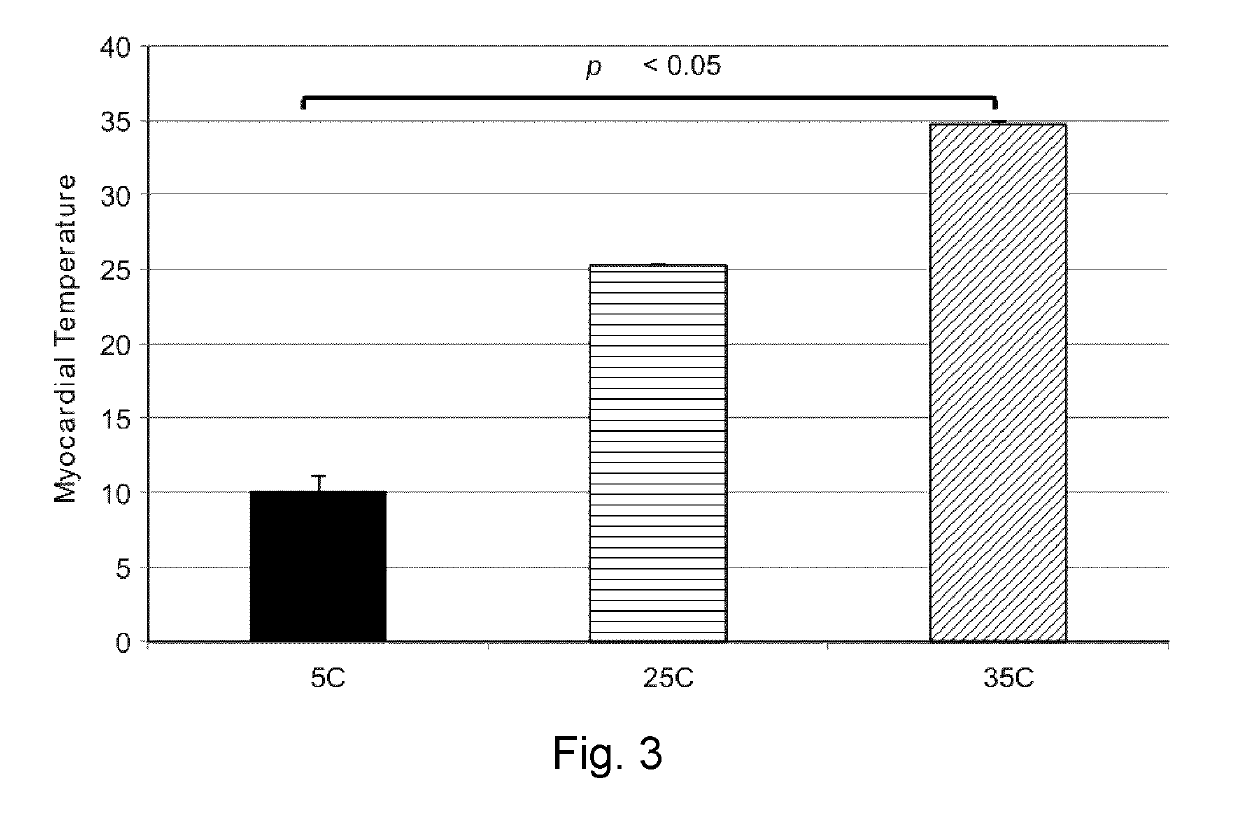Modulation of calcium ion homeostasis in harvested transplantable hearts
a transplantable heart and calcium ion technology, applied in the field of post-harvest maintenance of harvested hearts, can solve the problems of limited rehabilitation options, limited application of life-preserving interventions, and few strategies that actually re-power the heart, and achieve the effect of reducing the occurrence and extent of post-harvest ischemic damag
- Summary
- Abstract
- Description
- Claims
- Application Information
AI Technical Summary
Benefits of technology
Problems solved by technology
Method used
Image
Examples
example 1
[0084]It is apparent that strategies to minimize post-harvest ex vivo trauma and injury to donor hearts requires an understanding of ionic changes that occur in the heart during ischemia and during / after reperfusion.
[0085]During ischemia, the heart's metabolism shifts from aerobic to anaerobic with a subsequent production of protons within the cardiac myocytes. The excess protons efflux through the myocyte cell walls in exchange for ingressing Na+ ions through Na+ / K+ pump. As the ATP reserves within the myocytes are depleted, the myocytes become unable to pump the ingressing Na+ ions back out through the Na+ / K+ pump. As a result, as the duration of ischemia progresses, there is an accumulation of: (i) Na+ ions within the myocytes, and (ii) Na+ ions and H+ ions inside and outside the myocytes.
[0086]During reperfusion, the H+ ions on the outside of the myocytes are washed away resulting in the occurrence of a large Na+ / H+ gradient across the myocyte walls resulting in a large influx o...
example 2
[0104]The second study assessed the effects of reducing the Ca2+ ion concentration in cardioplegic solutions to determine if lowering the Ca2+ levels on the outside of myocytes would minimize the reverse mode functioning of the Na+ / Ca2+ pump thereby reducing the accumulation of Ca2+ ions within the myocytes. Accordingly, this study assessed the effects of 50 μmol / L, 220 μmol / L, 500 μmol / L, and 1250 μmol / L of Ca2+ ions in the cardioplegic solutions (FIG. 12). All reperfusions were done at 35° C.
[0105]Twenty four pigs were separated into four groups and then euthanized following standard protocols and medical ethics procedures following the schematic flowchart shown in FIG. 13. Immediately after procurement of each heart was completed, each heart was installed into a Quest MPS®2 Myocardial Protection System. The harvested hearts from the first group of pigs were perfused for 3 minutes with the exemplary oxygenated cardioplegic composition containing 50 μmol / L Ca2+ ions, that was warme...
example 3
[0113]The next study assessed if there were potential incremental benefits to acidification of a hypocalcemic oxygenated cardioplegic composition. Accordingly, this study assessed the effects of adjusting the pH of an exemplary hypocalcemic oxygenated cardioplegic composition from 7.9 to 7.4 to 6.9 to 6.4. The cardioplegic solution contained 220 μmol / L of Ca2+ ions in the cardioplegic solutions and all reperfusions were done at 35° C. (FIG. 18).
[0114]Twenty four pigs were separated into four groups and then euthanized following standard protocols and medical ethics procedures following the schematic flowchart shown in FIG. 19. Immediately after procurement of each heart was completed, each heart was installed into a Quest MPS®2 Myocardial Protection System. The harvested hearts from the first group of pigs were perfused for 3 minutes with the exemplary hypocalcemic oxygenated cardioplegic composition with a pH of 7.9, that was warmed to 35° C. prior to commencing the reperfusion pro...
PUM
 Login to View More
Login to View More Abstract
Description
Claims
Application Information
 Login to View More
Login to View More - R&D
- Intellectual Property
- Life Sciences
- Materials
- Tech Scout
- Unparalleled Data Quality
- Higher Quality Content
- 60% Fewer Hallucinations
Browse by: Latest US Patents, China's latest patents, Technical Efficacy Thesaurus, Application Domain, Technology Topic, Popular Technical Reports.
© 2025 PatSnap. All rights reserved.Legal|Privacy policy|Modern Slavery Act Transparency Statement|Sitemap|About US| Contact US: help@patsnap.com



